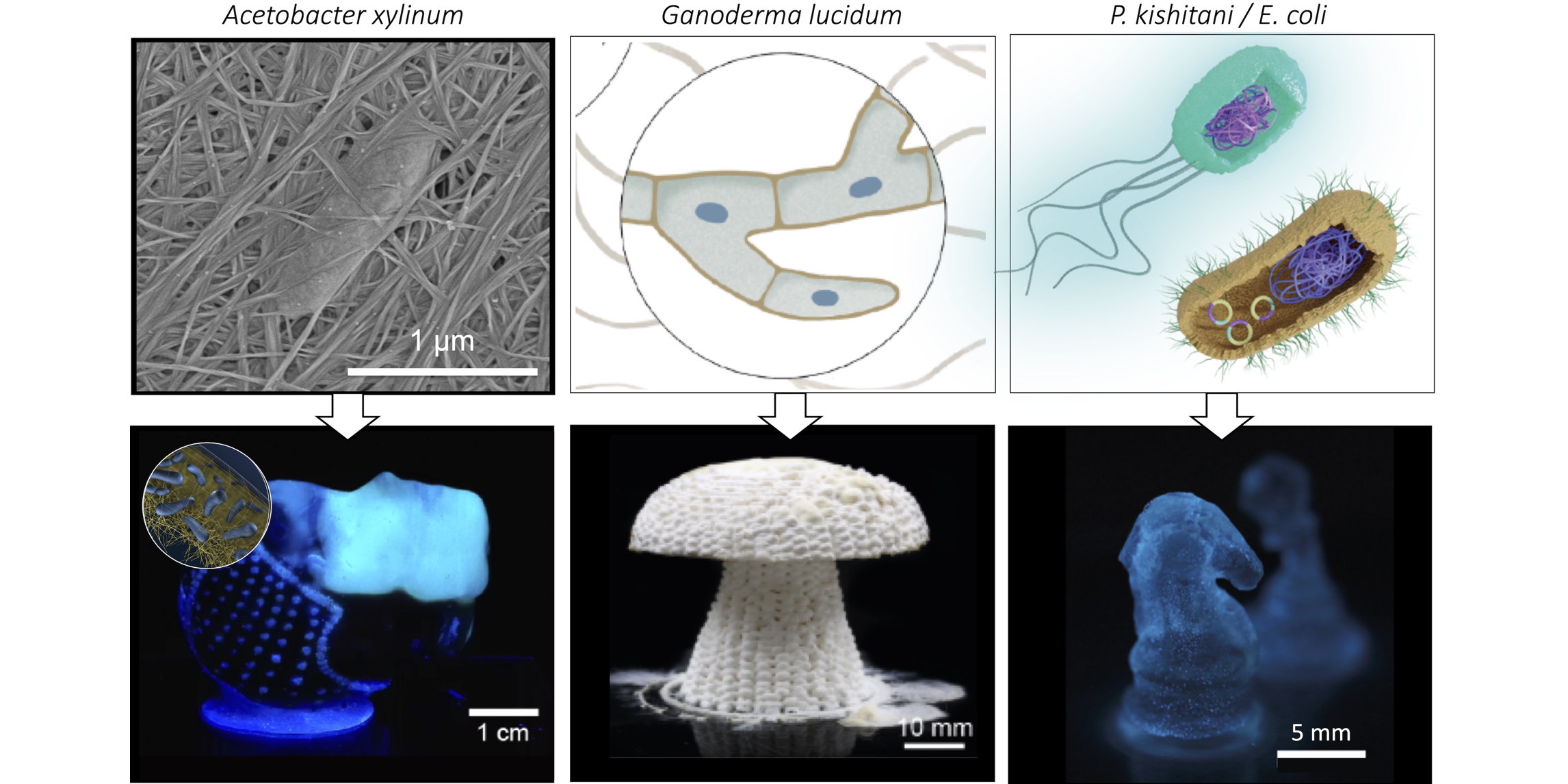Living Materials
Living materials harness the metabolic activity of microorganisms to imbue synthetic materials with the adaptive, regenerative and growth properties of biological structures.
In our research, living cells are used to synthesize and self-assemble building blocks under mild processing conditions in water. The microorganisms can be preserved in the material to promote self-healing of damaged sites, to sense specific molecules or to autonomously respond to changes in the environment.
This concept has allowed us to create cellulose materials with intricate geometries, living chemical sensors powered by luminescent bacteria, and fungi-based materials with the decision-making capabilities of complex adaptive systems.
The selected publications below provide examples of research projects under this thematic area:
external page A.R. Studart, K. Masania, Self-regenerating living material made of printed fungi, Nature Materials, 22 (1) 16-17 (2023).
external page S. Gantenbein, E. Colucci, J. Käch, E. Trachsel, F.B. Coulter, P.A. Rühs, K. Masania, A.R. Studart, Three-dimensional printing of mycelium hydrogels into living complex materials, Nature Materials, 22 (1) 128-134 (2023).
external page M.R. Binelli, A. Kan, L.E.A. Rozas, G. Pisaturo, N. Prakash, A.R. Studart, Complex Living Materials Made by Light-Based Printing of Genetically Programmed Bacteria, Advanced Materials, n/a (n/a) 2207483 (2022).
external page M. Schaffner, P.A. Ruhs, F. Coulter, S. Kilcher, A.R. Studart, 3D printing of bacteria into functional complex materials, Science Advances, 3 (12) (2017).
